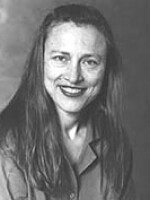LINDA WERTHEIMER, host:
Traffic is getting worse. How much worse? Once every 10 years, the Transportation Research Board analyzes data from the U.S. Census to find out. That report, Commuting in America, reveals that growing numbers of commuters are doing things that used to be practically unheard of. NPR's Kathleen Schalch has the story.
KATHLEEN SCHALCH: They're called extreme commuters, and Joe Werner(ph) is one of them.
(Soundbite of car door slamming)
SCHALCH: Werner works in Alexandria, Virginia. He lives in Woodbridge, Virginia, 23 miles away. He's hoping the drive home won't be too bad.
Mr. JOE WERNER: You sigh with relief every time you've got a decent commute. Tell you the truth, decent is an hour or less.
SCHALCH: When the traffic's backed up, it can take two hours or more. The Census Bureau didn't even used to have a name for this type of commute until it coined one in 2003. Now, extreme commuters are multiplying faster than any other category.
Mr. ALAN PISARSKI (U.S. National Academy of Sciences Transportation Research Board): The percentage of people traveling more then 60 minutes has increased by more then 50 percent in the last decade.
Alan Pisarski is author of the new report by the Transportation Research Board for the National Academy of Sciences. He says 8 percent of all Americans now commute more than an hour each way.
Mr. PISARSKI: It's just an extraordinary set of changes. In the most recent data that I've seen, which is 2005, half of the new commuters are commuting outside their county.
SCHALCH: And increasingly, they're traveling alone. A quarter century ago, one in five Americans carpooled. Today, only one in 10 do. People's destinations have changed, too. Pisarski says commuting used to mean getting in the car or on the train and heading into town.
Mr. PISARSKI: And that world is well gone. The dominant pattern today is live in a suburb, work in a suburb.
SCHALCH: Now, about half of all workers do this. Soon, it will be two-thirds. Pisarski says workers also commute to the suburbs from elsewhere, because increasingly, that's where the jobs are clustered.
Mr. PISARSKI: The suburbs are the doughnut, and we're seeing flows out to the suburbs from this inner city where the workers are now going to the jobs in the suburbs. And we're seeing flows into the suburbs from rural areas from ex-urban areas. And, of course, our transportation systems are not terribly well equipped to respond to that kind of a pattern.
SCHALCH: The result is congestion, often from early in the morning until late at night.
Mr. PISARSKI: There's no such thing as rush hour anymore. It's now - we transportation planners gracefully refer to it as the peak period. People are leaving very early, and they'll get to their offices, and they end up sleeping in the car at their offices for an hour just in order to beat the traffic. And to me, that's a great indicator that we are really failing the people.
(Soundbite of car engine)
SCHALCH: It's dark. Joe Werner's only halfway home, and he's looking out on six lanes of break lights.
Mr. WERNER: And the traffic is stopped. Well, maybe we're averaging a mile or two miles an hour, but it's backed up.
SCHALCH: And this isn't unusual. Sometimes it's like this for 25 miles. Werner gets frustrated, but he says living closer to his office would have been much more expensive.
Mr. WERNER: It just felt like it was too much of a price to pay.
(Soundbite of laughter)
Mr. WERNER: And, of course, as you'd guess, there are days where I rather wish I'd paid that price. But there are other times where, you know, you just take this as part of the job. My commute is a part time job, and my work is my fulltime job.
SCHALCH: By the looks of it, a lot of other people have made the same choice. Ten miles later, Werner finally pulls off the highway.
Mr. WERNER: It looks like Old Bridge Road is backed up.
(Soundbite of laughter)
SCHALCH: But, he says, he's seen worse. Kathleen Schalch, NPR News. Transcript provided by NPR, Copyright NPR.






